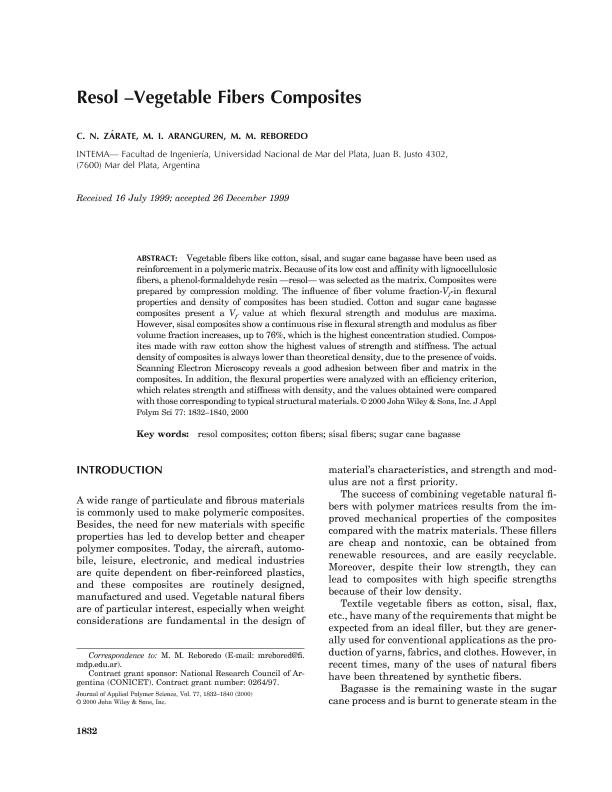Artículo
Resol-vegetable fibers composites
Fecha de publicación:
22/06/2000
Editorial:
John Wiley & Sons Inc
Revista:
Journal of Applied Polymer Science
ISSN:
0021-8995
Idioma:
Inglés
Tipo de recurso:
Artículo publicado
Clasificación temática:
Resumen
Vegetable fibers like cotton, sisal, and sugar cane bagasse have been used as reinforcement in a polymeric matrix. Because of its low cost and affinity with lignocellulosic fibers, a phenol-formaldehyde resin —resol— was selected as the matrix. Composites were prepared by compression molding. The influence of fiber volume fraction-Vf-in flexural properties and density of composites has been studied. Cotton and sugar cane bagasse composites present a Vf value at which flexural strength and modulus are maxima. However, sisal composites show a continuous rise in flexural strength and modulus as fiber volume fraction increases, up to 76%, which is the highest concentration studied. Composites made with raw cotton show the highest values of strength and stiffness. The actual density of composites is always lower than theoretical density, due to the presence of voids. Scanning Electron Microscopy reveals a good adhesion between fiber and matrix in the composites. In addition, the flexural properties were analyzed with an efficiency criterion, which relates strength and stiffness with density, and the values obtained were compared with those corresponding to typical structural materials.
Palabras clave:
Resol Composites
,
Cotton Fibers
,
Sisal Fibers
,
Sugar Cane Bagasse
Archivos asociados
Licencia
Identificadores
Colecciones
Articulos(INTEMA)
Articulos de INST.DE INV.EN CIENCIA Y TECNOL.MATERIALES (I)
Articulos de INST.DE INV.EN CIENCIA Y TECNOL.MATERIALES (I)
Citación
Zarate, C.N.; Aranguren, Mirta Ines; Reboredo, Maria Marta; Resol-vegetable fibers composites; John Wiley & Sons Inc; Journal of Applied Polymer Science; 77; 8; 22-6-2000; 1832-1840
Compartir
Altmétricas




